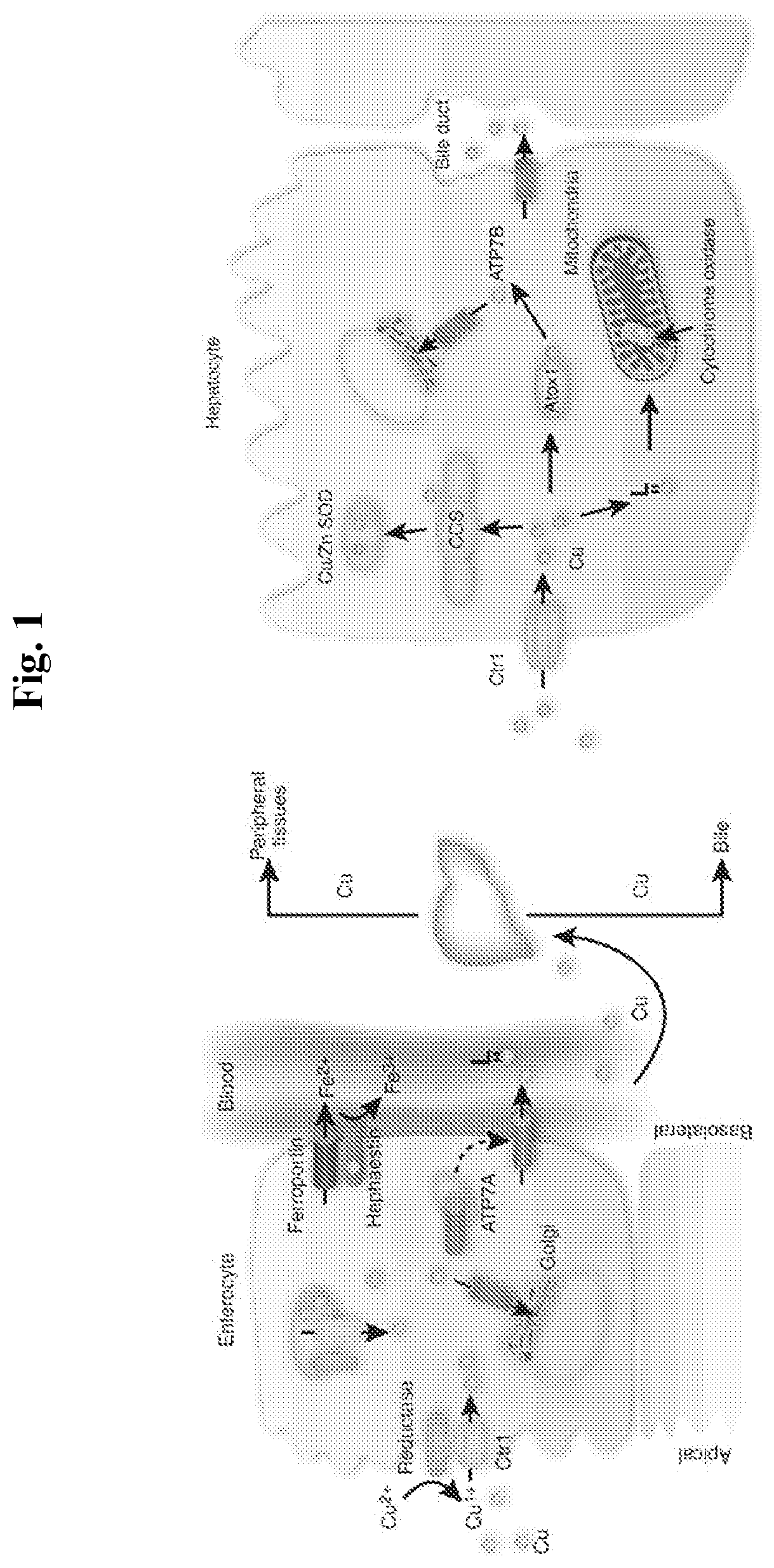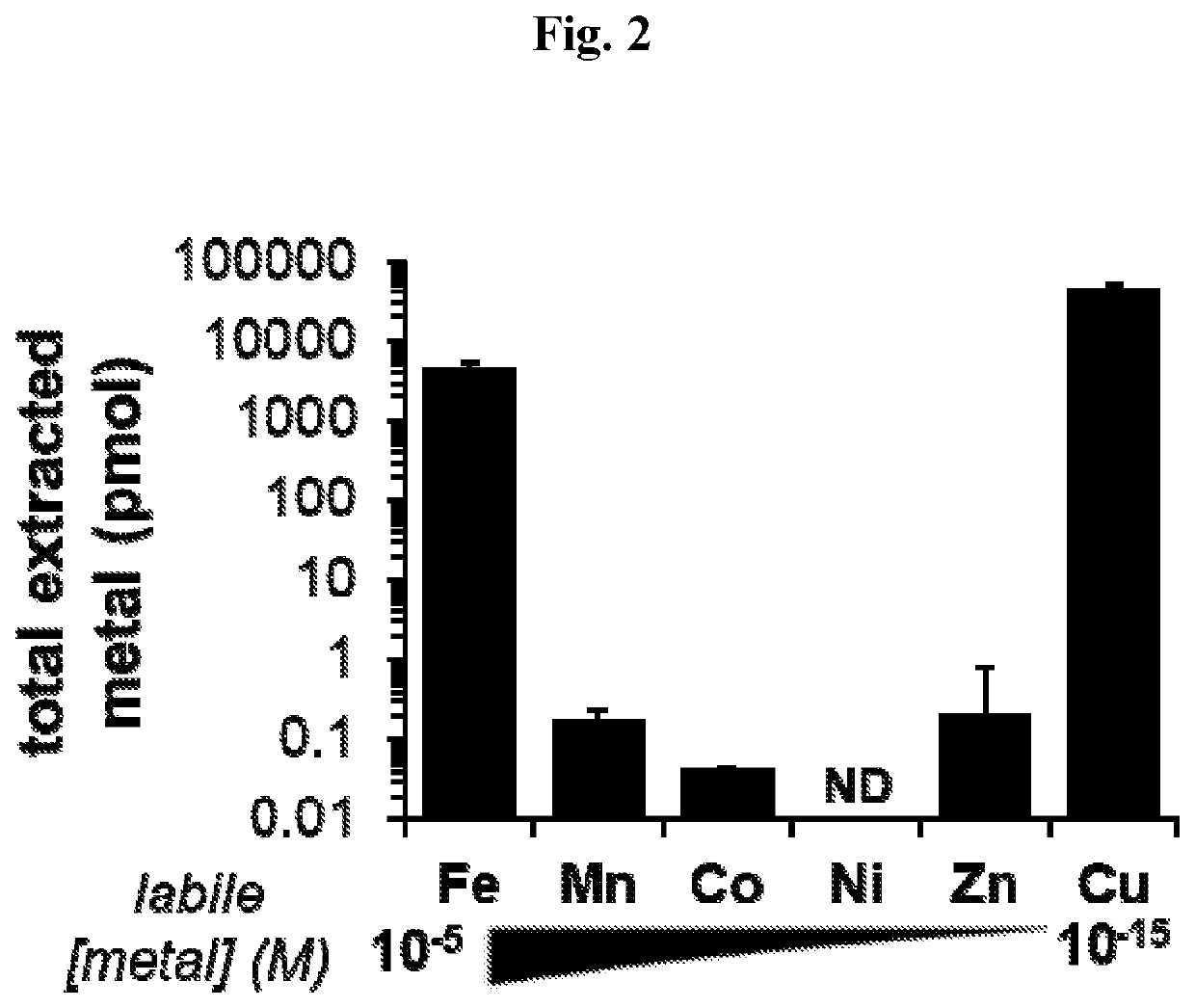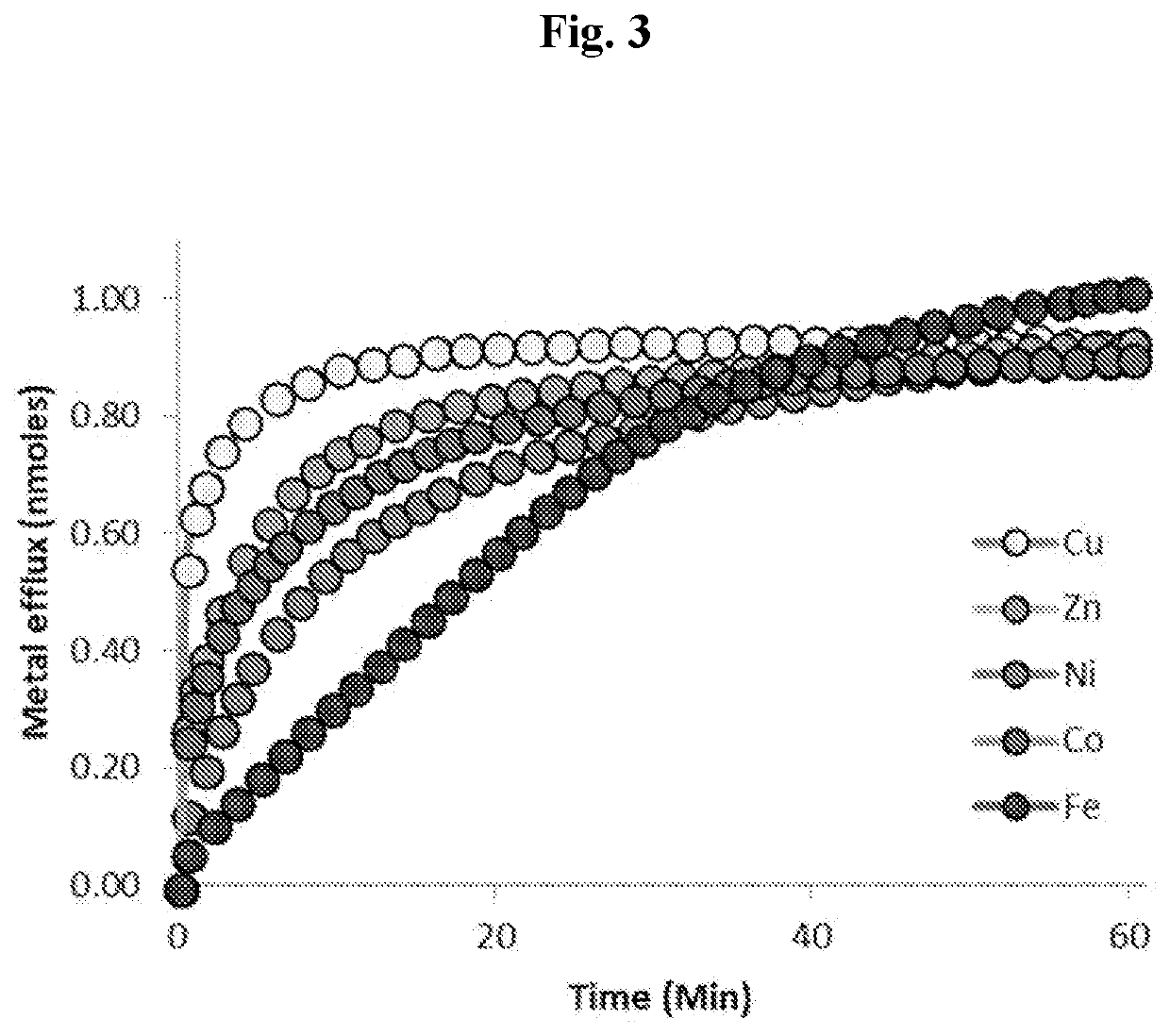Restoration of transmembrane copper transport
a transmembrane copper and transport technology, applied in the field of recovery of transmembrane copper transport, can solve the problems of affecting the physiology of ctr1ctr3 deficient yeast, the treatment options for these currently incurable diseases fail to address the underlying molecular defect, and the concentration of iron is still many orders of magnitude greater, so as to achieve the remarkable capacity to restore copper homeostasis and restore physiology in ctr1ctr3
- Summary
- Abstract
- Description
- Claims
- Application Information
AI Technical Summary
Benefits of technology
Problems solved by technology
Method used
Image
Examples
example 1
l Binds to and Sequesters Copper with a Great Affinity and Rapidly Transports Copper Across Membranes
[0105]Hinokitiol binds to and sequesters copper with a greater affinity than any other metal (including iron). Stoichiometric competition experiments with 1 mM of each divalent metal and 1 mM hinokitiol in a 10 mM Mes / Tris buffer in 1:1 MeOH:H2O at pH=7.0. Hinokitiol binds many metals by ICP-MS quantification of extracted hinokitiol-bound metal. The metal in the organic layer was determined to be in the order of Cu>Fe>Mn≈Zn>Co>Ni. ND=Not detected. N=6. (FIG. 2)
[0106]Hinokitiol transports copper across membranes faster than any other metal. Hinokitiol (10 μM) rapidly promotes the efflux of multiple divalent metals from POPC liposomes as determined by a PhenGreen assay. In these studies, hinokitiol was unable to transport MnIIto any observable degree. Quantification of metal release was done by comparison of fluorescence quenching to a standard curve for each metal. The reciprocal half...
example 2
ity of Hinokitiol to Bind and Transport Copper
[0107]Biophysical experiments were performed to better understand the capacity of hinokitiol to bind and transport copper. This small molecule readily binds copper to form a hinokitiol:copper complex, as evidenced by a shift in the ultraviolet-visible (UV-vis) spectra upon titrating with copper (II) chloride (FIG. 4B). Unlike the aforementioned water-soluble copper chelators, the hinokitiol:copper complex primarily partitioned into the nonpolar solvents over water (FIG. 4A). To expand, 95% of the hinokitiol:copper complex partitioned into octanol over water as opposed to >85% of the currently available water-soluble chelators partitioned into water over octanol. Hinokitiol also transported copper (II) across liposomal membranes, whereas the suite of chelating agents showed minimal transport relative to controls (FIG. 4C).
example 3
cue of Δctr1Δctr3 Yeast Missing the Passive Copper Transporters
[0108]Given these highly encouraging results, the capacity for hinokitiol to restore transmembrane copper transport and therefore growth in a train of Saccharomyces cerevisiae, Δctr1Δctr3, missing the passive copper transporters Ctr1Ctr3 (FIG. 5A) was tested. Under respiratory and non-permissive conditions, hinokitiol dose-dependently restored yeast growth up to wild type control levels with maximum restoration occurring at intermediate concentrations of hinokitiol (FIG. 5B). Additionally, growth restoration was copper dependent and aligned with the extracellular copper gradient established in the media (FIG. 5B). Unlike in the case of Δctr1Δctr3, hinokitiol was unable to restore growth to iron transporter-deficient yeast missing the FetFtr1 transport complex under respiratory and non-permissive copper conditions (FIG. 5C). These results are consistent with hinokitiol-mediated transport of copper, rather than iron, acros...
PUM
| Property | Measurement | Unit |
|---|---|---|
| Transport properties | aaaaa | aaaaa |
| Cell growth | aaaaa | aaaaa |
Abstract
Description
Claims
Application Information
 Login to View More
Login to View More - R&D
- Intellectual Property
- Life Sciences
- Materials
- Tech Scout
- Unparalleled Data Quality
- Higher Quality Content
- 60% Fewer Hallucinations
Browse by: Latest US Patents, China's latest patents, Technical Efficacy Thesaurus, Application Domain, Technology Topic, Popular Technical Reports.
© 2025 PatSnap. All rights reserved.Legal|Privacy policy|Modern Slavery Act Transparency Statement|Sitemap|About US| Contact US: help@patsnap.com



